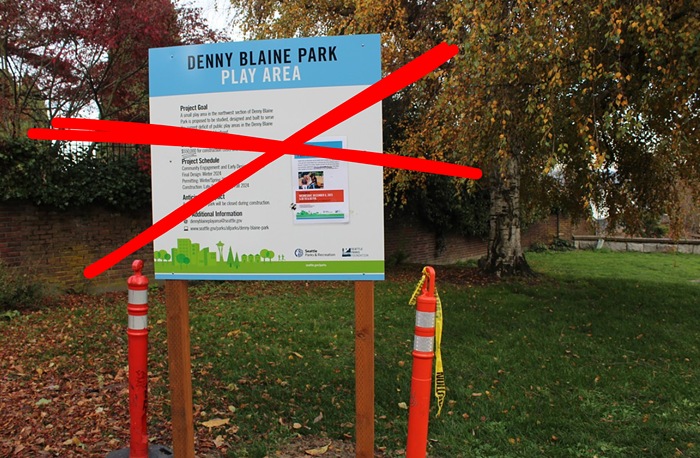
- Ana Sofia Knauf
- THE UNIVERSITY OF WASHINGTON has a bunch of fancy new dorms coming in, but what it needs is more affordable housing for students.
I went to the University of Washington, and as an undergrad, my first off-campus apartment had backed-up plumbing, a washing machine that reeked of mildew, and a backyard with a view of an abandoned house foundation that was part trash dump, part homeless encampment. (Once, it was also the site of an accidental trash fire.) The place wasn't perfect, and there were six of us sharing it, but it was my home for $445 a month.
After groceries, my minimum-wage paycheck barely covered rent. This wasn't so long ago, but looking back, it seems that apartment was a steal. Three years later, I’m paying $700 for a place less than a block away.
Those of us in the University District are intimately familiar with the stresses of Seattle’s spiking rents. First, you spend months searching for housing and tearing your hair out when no one calls you back. Once you do find a place, you’re forced to empty your bank account to pay for a pocket-sized apartment in an unkempt building with barely working appliances. For students, the problem is particularly acute.
Rent in the University District increased by 9 percent from 2013 to 2014, according to the Seattle Times, and the "overall average rent" in the neighborhood is now $1,181.
What this means, in practical terms, is that students can no longer work their way through school.
We’ve all (sadly) gotten used to the idea of taking out loans and going into debt for an education. But in the past, at least students at the University of Washington could pay rent on a crappy, crowded apartment with earnings from a coffee shop job—a modest dream increasingly out of reach for today’s undergrads.
“The market out here is getting incredibly competitive,” said Austin Wright-Pettibone, director of the Office of Government Relations for the Associated Students of the University of Washington. “Students shouldn't have to take out a loan for classes and a loan for their housing situation, just to be able to access the university. We have to be able to work our way through school."
Today, even if a student worked 20 hours per week at the state’s $9.32 minimum wage, he or she would only make $746 a month before taxes—far below what it costs to pay for tuition, rent, food, and books.
That could begin to change a little as Seattle’s climb toward a $15 minimum wage begins. But it’s not going to reverse the housing crisis in the U-District, and any income gains for students over the next few years could easily be wiped out by rising housing prices.
Consider: By April of 2015, the minimum wage in Seattle will be $11 per hour for many workers, meaning a student working 20 hours a week at this new minimum wage would take in $880 per month. That still is far from enough to cover the $1,181 overall average rent in the U-District.
Students working 20 hours a week won't be able to afford that level of rent until the wage gets to $15 per hour—and by then, who knows what the overall average rent in this neighborhood will be. (Never mind that at $15 an hour for 20 hours a week, a student paying $1,181 for rent would only have $19 left over for that month's tuition, food, and books.)
Sure, there are cheaper options than paying $1,181 a month for housing, but even those options don't make it easy to afford tuition, food, and books on top of rent. And you could tell students to work more hours, but “working more than 20 hours is harmful for students,” said Wright-Pettibone. “They can’t focus on class or access their university by participating in campus activities or clubs.”
It turns out the dorms aren’t an option, either. The UW has more than 40,000 students, but currently it can only offer on-campus housing to 18 percent of them.
Not to mention that on-campus housing is fucking expensive in the first place.
The freakishly modern dorms along Northeast Campus Parkway, with their massive windows and mausoleum-gray paint, run students about $928 per month. That works out to $8,628 for the academic year, which is more than half of a year’s tuition. Those new dorms replaced three of the more affordable dorms as part of a mass renovation plan. And in the next five years, the UW will take on a $376 million bill to tear down and renovate three additional dorms (all of which are currently the cheapest on campus at about $640 a month, the Seattle Times reported).
To afford the UW, many students are moving back home or moving further away from the university and commuting to campus.
“But at a certain point, you can live only so far,” said Mitch Brown, assistant director for the ASUW’s Office of Government Relations. He pointed out that cuts to public transportation (Metro bus service, for example) only make it harder to get to classes and work on time.
Brown, a senior studying political science, was brought onto Mayor Ed Murray’s 28-member Housing Affordability and Livability Advisory Committee after the ASUW sent an open letter that demanded the mayor include a student voice. The committee’s first meeting will be November 4.
“I’m going as an advocate for students across the city," Brown said. "There needs to be a voice for those who can’t move on a whim.”
For Brown, student housing affordability is also a personal issue. According to the US Department of Housing and Development, people are considered cost-burdened if their rent is more than 30 percent of their income. He pays much more than that.
Brown works at the student government office 20 hours a week and makes $10.19 an hour. That works out to $815 per month. Before utilities, his rent is $540, meaning his rent is more than 66 percent of his income.
Not only that, but Brown lives in a house with 11 other people, a few of whom share bedrooms to make rent a little cheaper. Brown is first to point out that living with that many people is against city housing codes, which cap shared living spaces at eight unrelated tenants per unit.
Wright-Pettibone said that’s a common way students find cheaper rent, though it shouldn’t have to be this way. “If we have these codes as a community," he said, "we need to make it so all members of the community can [afford to meet] the standard that we set. Otherwise, why do we have them?”
While I still cringe whenever I cut my current apartment’s $2,000 rent check (split between three roommates), I guess I can at least be grateful that it’s only three roommates (rather than Brown's 11, or the five I used to have). And I'm definitely grateful I’m no longer struggling to pay rent for a moldy townhouse on a UW cafeteria worker’s paycheck. I'm only a year out of school, but I don't know how today's students do it.


















